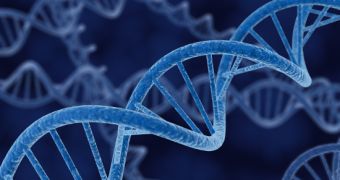Scientist Sankar Chatterjee believes he has solved the mystery surrounding the origin of life on our planet. He says that meteors and comets brought the “ingredients” for life on Earth, and that the craters they created when crashing into our planet provided the right environmental conditions for formation of the so-called primordial soup.
The Texas Tech University researcher says that, according to evidence at hand, early Earth was by no means a quiet place. On the contrary, he argues that, between 4.1 and 3.8 billion years ago, our planet was regularly hit by rocky asteroids and icy comets.
Whenever a fairly large meteorite collided with our planet, it created major impact basins. By the looks of it, some of these basins measured an impressive 350 miles (563 kilometers) in diameter.
What's more, the force of the impact was strong enough to disturb the planet's crust, thus causing geothermal vents to form.
Given our planet's proximity to the Sun, and also thanks to these newly formed geothermal vents, the icy comets that collided with Earth sooner or later melted, and filled the craters that they themselves had formed with water and several other chemical compounds that in time gave birth to life forms.
As the researcher puts it, “The geological stage provides special dark, hot, and isolated environments of the crater basins with the hydrothermal vent systems that served as incubators for life.”
Furthermore, “Segregation and concentration of organic molecules by convective currents took place here, something like the kinds we find on the ocean floor, but still very different. It was a bizarre and isolated world that would seem like a vision of hell with the foul smells of hydrogen sulfide, methane, nitric oxide and Steam that provided life-sustaining energy.”
In time, simple compounds in this primordial soup grew into bigger, more complex ones and, at some point, simple RNA and protein molecules began to accumulate in the craters' pores and scaffolds.
“The RNA and protein molecules begin interacting and communicating. Eventually RNA gave way to DNA – a much more stable compound – and with the development of the genetic code, the first cells divided,” Sankar Chatterjee explains.
Interestingly enough, the researcher maintains that the RNA and protein molecules managed to survive in this primordial soup thanks to a fatty lipid material that was also delivered to our planet by space bodies and that somehow encapsulated them.
“This fatty lipid material floated on top of the water surface of crater basins but moved to the bottom by convection currents. At some point in this process during the course of millions of years, this fatty membrane could have encapsulated simple RNA and proteins together like a soap bubble,” the researcher argues.
Once DNA took the stage in the aftermath of all said cosmic, geological and chemical processes, it was only a matter of time before cells able to store, toy with and pass on genetic information came into being.
Sankar Chatterjee believes that his theory on the origin of life is true to facts because it takes into account facts having to do with both chemical evolution and the geological conditions present on our planet in its early days.
“This is bigger than finding any dinosaur. This is what we’ve all searched for – the Holy Grail of science,” he says.
The researcher is to detail his findings this October 30 at this year's Meeting of the Geological Society of America in Denver.

 14 DAY TRIAL //
14 DAY TRIAL //